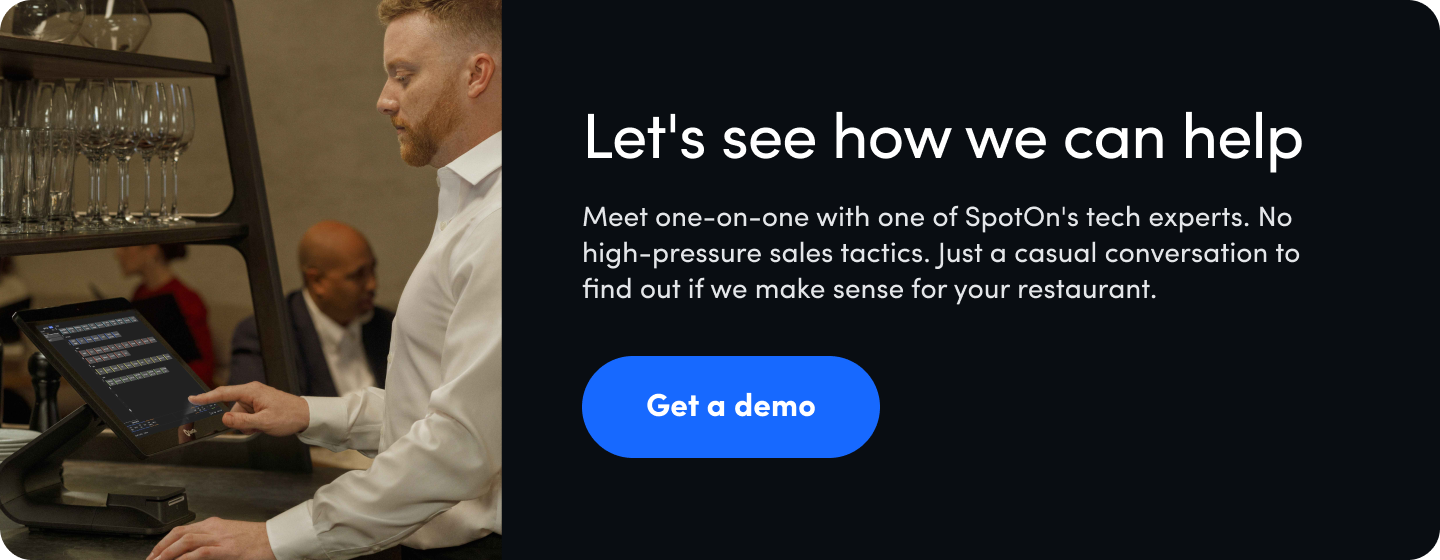Getting your business discovered by potential customers is a challenging task. Small businesses can use paid ads, social media promotion, and other clever tactics to lure curious local customers to try a new food spot. But we all know how tedious this process can be, especially if your business wants to save more than it spends.
Even if you're taking out single-page ads in the newspaper each week or doling out free samples on the sidewalk, most restaurants don't realize there's a simple solution to help them get noticed by potential customers. To get some extra recognition online, restaurants can complete a few simple changes to their website and Google Business Profile to improve how guests discover their business online. This process is known as optimizing for local SEO (search engine optimization).
To help your restaurant optimize its online presence, we've included some simple local SEO tips that you can implement on your own. But before you start perfecting your website and luring in new customers, we recommend you claim your Google Business page. You only need an internet connection and a free Google account to start the verification process.
Here are some key takeaways we'll discuss in the blog:
- Discover the right keywords to describe your restaurant by:
- Using a keyword planning after signing up for Google Ads, Semrush, Moz, or Ahrefs
- Mentioning the relevant keywords 3-4 times per webpage
- Including your city and restaurant name on your webpages
- Interact with honest reviews and social media posts by:
- Responding to honest reviews with gratitude
- Acknowledging negative reviews with a sense of accountability
- Continually update your restaurant's online information by:
- Refreshing your hours of operations, especially for upcoming holidays
- Claiming your business page on Facebook and Yelp alongside Your Google Business Profile
- Adding your business phone number, address, and service type to your different online profiles
- Add a menu to your Google Business Profile by:
- Clicking on the 'Menu' section in Google Business Profile and typing in specific menu items
- Uploading an image of your complete menu for easy search access
- Connect your different online profiles by:
- Including your restaurant website on Yelp, Google My Business, etc.
- Making sure your online ordering page appears on your website and different review sites
What exactly is search engine optimization (SEO)?
Search engine optimization (abbreviated to SEO) is the process of creating web pages and website content that users can easily find by exploring a term or phrase on search engines such as Google, Bing, and Yahoo. Some essential ways to optimize a website include using relevant links, ensuring review sites like Yelp include accurate business information, and even utilizing the right words and phrases that make sense for your business.

For example, go to Google and search for different minimum wage rates in California. You'll find a series of blog articles with the correct information (including SpotOn's guide to California's minimum wage). Since these articles are published on websites that use relevant keywords and feature similar topics, Google knows to include these specific sites on their search engine results page.
Does SEO matter for local businesses?
Yes, local SEO is important for two main reasons: to increase outreach for potential customers and to navigate more traffic toward your restaurant's website.
Of course, before the internet became a massive part of everyone's life, restaurants expected their physical ads to create more foot traffic. Now, in our era of smartphones, Wi-Fi, and social media apps, people are always searching for restaurants and businesses that best fit their needs. The search results will then provide customers with a list of the companies that match the specific search intent.
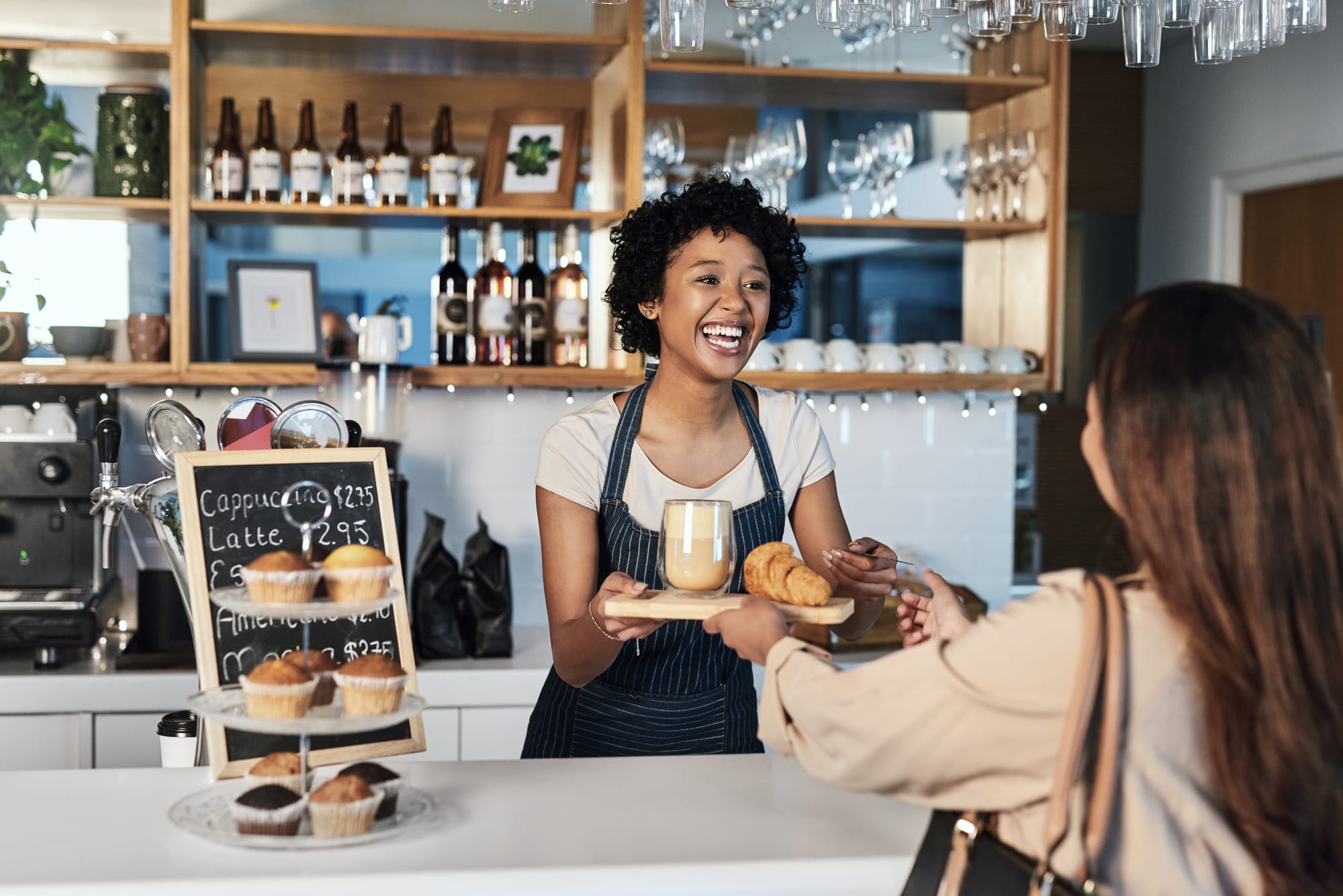
If customers want to dine at an Italian bistro, they'll most likely do a Google search for "best Italian bistro near me." Based on their location, preferences, and many other factors, Google Search will showcase the best-fitting restaurant on the first page of the search page itself, making it easier for new customers to discover and order from that business.
Remember, search engines like Google or Bing are designed to give users results and answers that best fit their needs. So when you continually optimize the information on your restaurant website, search engines will know to recommend your business listing.
What about other review sites like Yelp?
Strong restaurant SEO isn't only about keeping your business hours up-to-date on your Google Business Profile. Other websites such as Facebook, Yelp, and even Instagram help the Google search engine align your restaurant with the correct search terms for increased visibility.
1. Describe your restaurant with the right keywords and phrases
The easiest way to get noticed by search engines is to use accurate keywords and phrases to describe your restaurant. Google first looks at the type of language written on a restaurant's business website before showcasing their restaurant to people searching for a specific kind of food in a specific place. Your description of food items and meta descriptions of different pictures featured on your restaurant website should also include keywords and phrases.
There are several simple and effective ways to find the right keywords for your restaurant. The first is to type your restaurant’s name into the Google search bar and look at the recommended keywords that appear in the search results. The recommended keywords often involve reviews and menu options that guests can read before deciding on a restaurant. You can also search your local city + restaurant name for more keyword information. Google recommends that you think like your customers by including essential information without getting too descriptive.
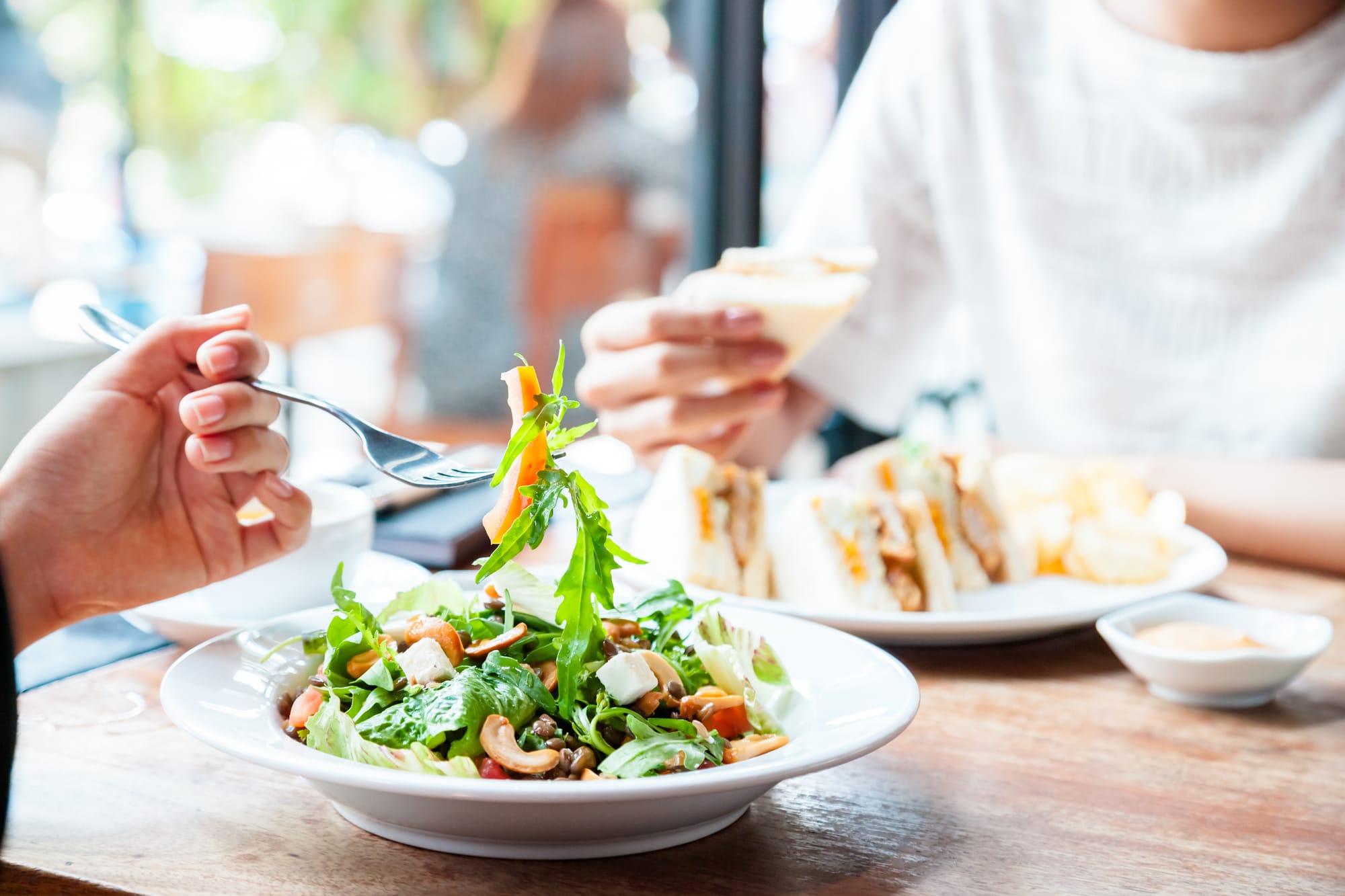
On top of writing accurate keyword descriptions on your website’s copy, remember to use accurate keywords in each meta description and title for your different web pages. Each page should target a primary keyword in the meta title followed by your restaurant name just to further show Google the relative information surrounding your restaurant’s web pages.
Think of the Google search engine as a digitized yellow page book that lists every restaurant and business. Instead of organizing alphabetically by name, the Google algorithm lists those businesses and restaurants based on specific words and phrases that are deemed relevant. As a restaurant owner, if you include your city name on your website about 3 – 4 times, Google will have an easier time placing your restaurant alongside other businesses using similar keywords and phrases.
Don’t forget to also attach Google Analytics to your website to see the actual metrics behind a page, such as sessions, most viewed pages, and bounce rates, to find your lower-performing pages and rework them accordingly. Your webmaster can add Google Analytics to your website. If you’re tech-savvy enough, you can try it on your own. For WordPress, you can use the Google Analytics plugin.
Other keyword search alternatives may require payment to utilize different tools and features. Here are some options that we recommend for restaurants willing to dedicate a small amount each month to their online presence.
- Google Ads offers a keyword planning tool that users can use to find relative and vital keywords related to their business and ad campaigns. While you do not need to purchase an entire ad campaign to get started, Google Ads does administer a $50 holding charge that disappears after a couple of days.
- SEMRush, Moz, and Ahrefs are online content marketing sites that provide a range of tools to help any business examine their web traffic, research and locate the best keywords to use on a website, and so much more for a monthly subscription.
2. Encourage honest reviews and social media interactions

It's natural for restaurant owners to stress over online reviews. Besides informing future guests about your food, reviews are also a great way to show the Google algorithm that your business is more legitimate than a random business listing. Search engines, particularly, love seeing restaurant reviews on social media sites like Facebook for the same reasons. Reviews act as feedback while providing a strong sense of authenticity to your restaurant's business profile.
While everyone loves seeing positive reviews, responding to both positive and negative reviews is also a great way to boost your local SEO potential. By calmly sending a message acknowledging the review professionally, you continually prove that you're a real business interested in listening to your different reviewers.
For positive reviews, leave a sentence or two to show your appreciation for their patronage. Here are some examples. Feel free to use them as you please or draft your own.
- “Thanks for these kind words. We really appreciate hearing how much you enjoyed your time at our restaurant.”
- “Reading this made our day, and we look forward to seeing you again.”
- “Wow, [customer name]. Thanks for writing this amazing review. We hope to recreate that magic again and again.”
Since those guests took the time to go online and write that positive review, pay special attention to what they specifically mention as a part of their positive experience. Did they rave about your restaurant’s nigiri? Was an employee specifically named for their great service?
For negative reviews, we recommend you acknowledge and apologize as professionally as possible for the negative experience they might have had. Treat it more as a customer service problem that can be easily remedied. Remember, your responses to these reviews show potential customers how willing you are to listen and understand their perspective.
Here are some examples of ways to respond to negative customer reviews. Of course, we still recommend that you edit and expand on these responses to specifically address the complaints in a review:
- “Hi [customer name], we’re so sorry to hear you had this experience. This isn’t something that usually happens, but we’re dedicated to hearing more and fixing this. Feel free to give us a call or send us an email about your experience.”
- “Hello [customer name]. First of all, thank you for sharing this experience with us, and we’re sorry that things didn’t turn out the way you planned. We’re here to help fix things, so feel free to contact us so we can learn more.”
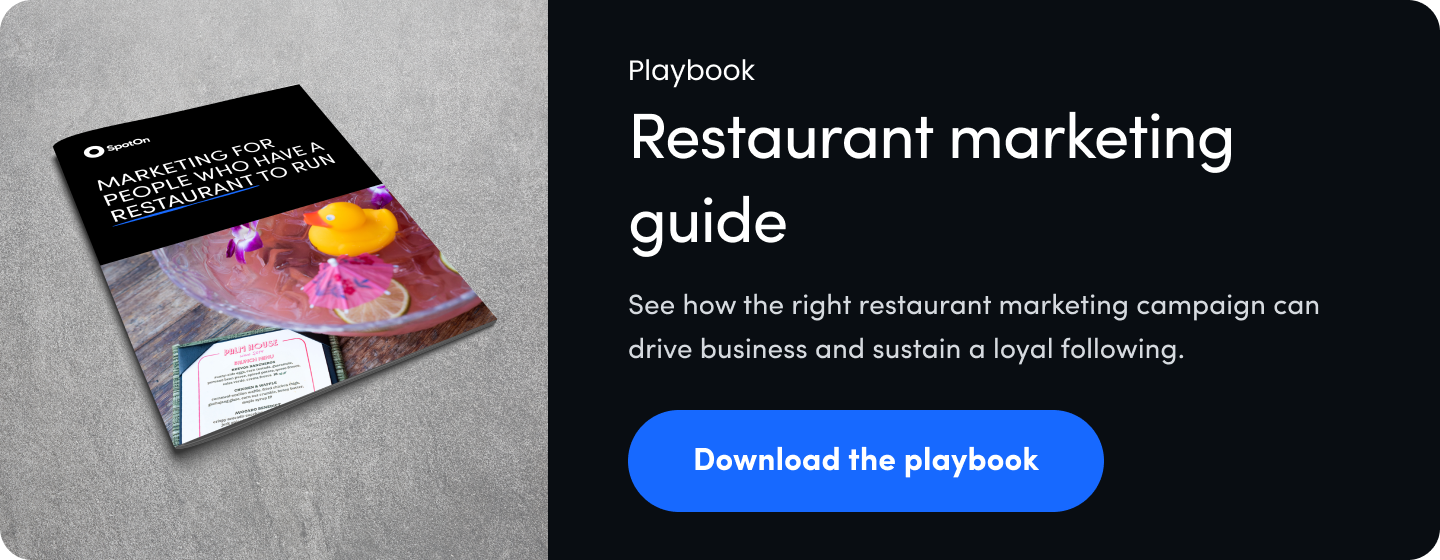
3. Include essential business details and recent changes
Nobody likes stumbling onto an old restaurant website that hasn't updated its working hours since the dawn of Wi-Fi. On top of looking outdated to guests, search engines tend to deprioritize websites with that older information since there's a higher chance of inaccuracies.
When people search for restaurants on Google, remember one important lesson: they are looking for straightforward answers to their questions (all while craving a decent meal). So, as you continually update your Goole Business Profile with the most recent business information, you show future guests and search engines there's a real person behind the screen.

If you're a restaurant owner, remember to update your information on different business profiles besides your Google Business Profile. Local SEO depends on consistent information that stays the same on other websites, including your restaurant's website. Imagine if you only updated your hours of operation on Yelp but still need to update them on Google. A customer might get the wrong information and trek to your business just to discover you're closed for a holiday.
To update your business information on Yelp, follow these steps:
- After claiming your Yelp business page, click on ‘Business Information.’
- You can find ‘Business Information’ in the top left menu if you're using a desktop.
- On the Yelp for Business app, click on ‘Biz Info’ in the bottom navigation bar.
- From there, you can upload vital information about your business, such as business name, phone number, address, website, and service type.
- We recommend you add a short description of your restaurant that utilizes relevant keywords and phrases.
To update your business information on Facebook, follow these steps:
- After you’ve logged into your Facebook profile, go to ‘Business Settings’ and click on ‘Business info.’
- Locate the ‘My info’ section and click on ‘Edit.’
- You can update your name, email address, and other important information from there. Just don’t forget to click ‘Save.’
- Facebook might email you to confirm that you made those changes and not some hacker. Remember to check your spam folder if you can’t find the confirmation email.
4. Add a menu to your Google Business Profile
Guests love searching for a restaurant to peek at a menu and decide on their next meal. If you're trying to improve your local SEO for your restaurant, add your menu to your Google Profile so guests can easily find it on the search results page.
To add menu items to Google:
- Log into your Google Business Profile
- Click ‘Info’ in the top navigation.
- Find the ‘Menu’ section and click on ‘Edit.’
- From there, you can add, edit, and remove menu items.
You can even draft a user-friendly digital version of your restaurant menu to make searches more accessible for your guests. If you've got multiple menus, remember to include them on your website. To upload an image of your menu, go to your Google Business Profile and select ‘Edit menu.’ Next, select ‘Photos of menu’ at the top of the page. You can then upload images from your device by using the ‘Select photos’ option or simply dragging and dropping the images.

Local businesses should also upload relevant images to their Google Business Profile since the Google algorithm loves to use official pictures from your business on the search results page. These can be simple images of your restaurant's interior, a close-up of a food dish you consider essential, or any other photo that could be posted on Instagram to further inform and engage with potential customers.
5. Link your restaurant website and online ordering site to your Google Business listing
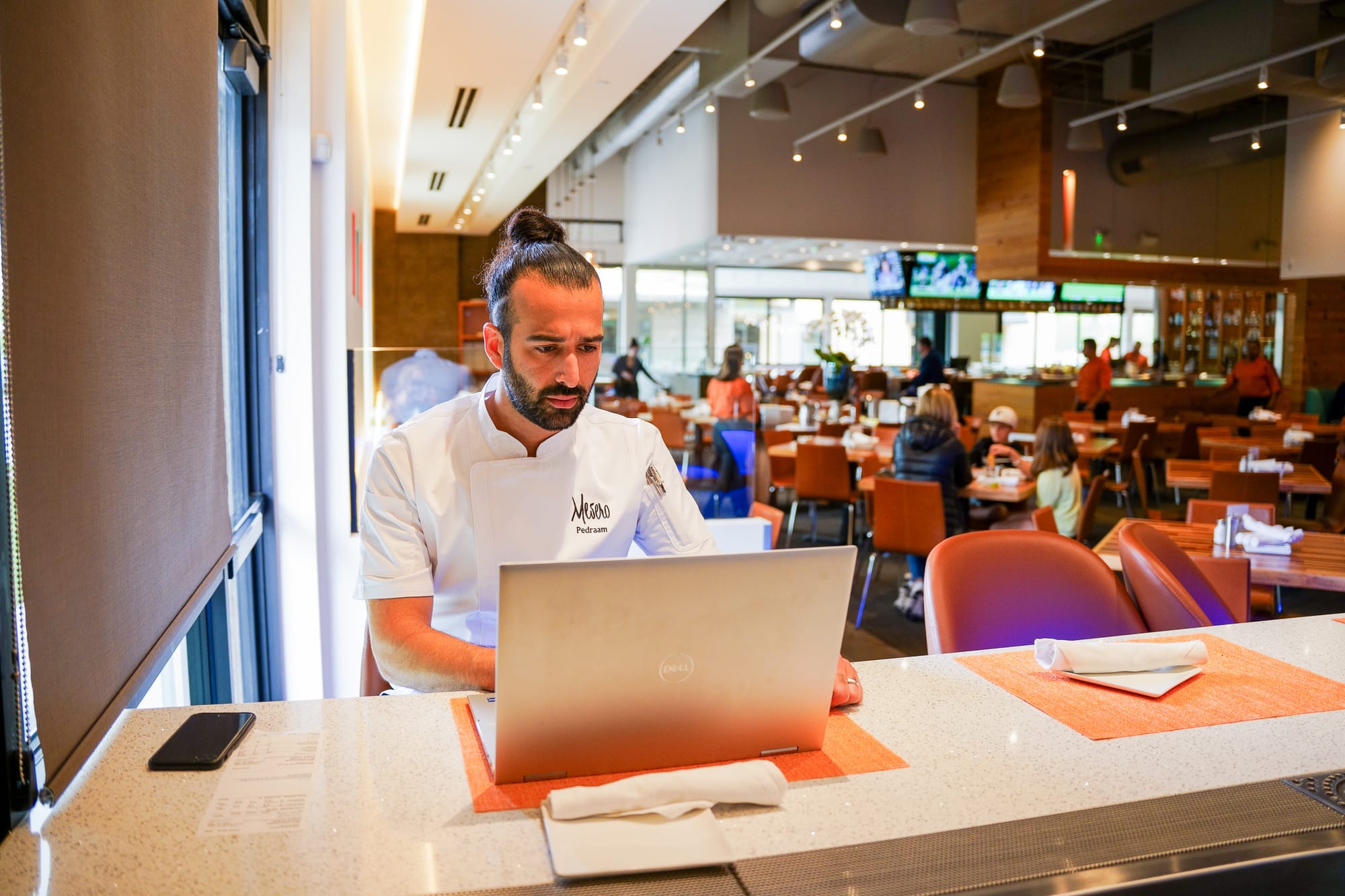
When your business offers online ordering to customers, you give them an extra incentive to enjoy your food. However, there's also a decent restaurant SEO benefit to linking your online ordering and restaurant website to your Google Business Profile.
Google's search results algorithm loves to make connections more accessible for the user since those connections give the feeling of less time spent searching and more time spent getting exact information. So, when you make it even easier for customers to find your restaurant's online ordering site, it'll put your restaurant on the Google local SEO map alongside Google Maps. Alongside online ordering, you can add a link from your online reservation system on your restaurant's website. This reservation link will also help guests quickly see if reservations are available or if they should check back another time.
Bringing in new guests to your restaurant is no easy task. On top of managing operations so every guest gets their food on time, marketing means you’ll also need to invest more time and money. Thankfully with SpotOn’s point-of-sale system, you get software tools to help you streamline your restaurant’s workflow without keeping you stuck in the back office. Thanks to automated tip pooling, instant POS reports, the new AI-powered Marketing Assist tool, and more, you can get time to focus on what matters: your restaurant and its food.
